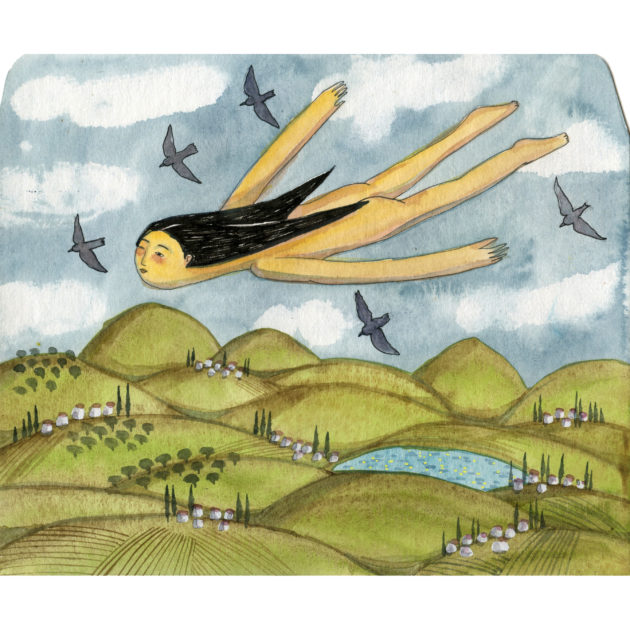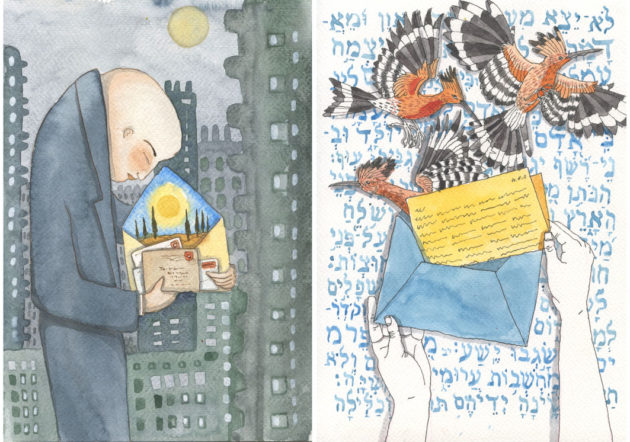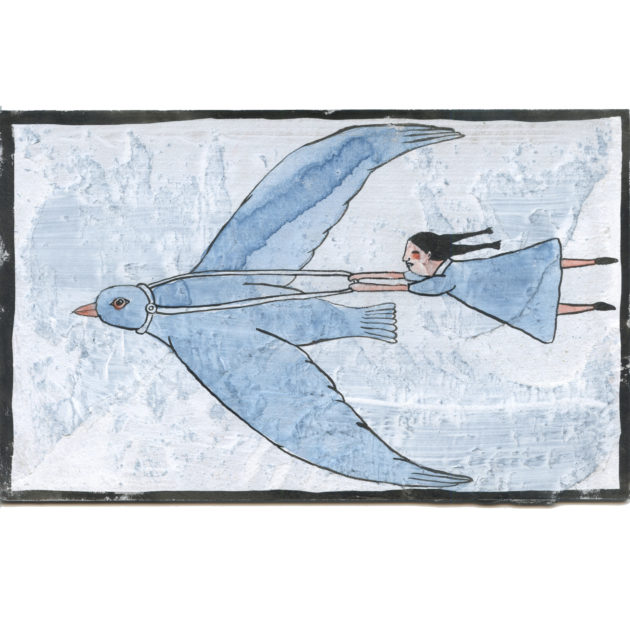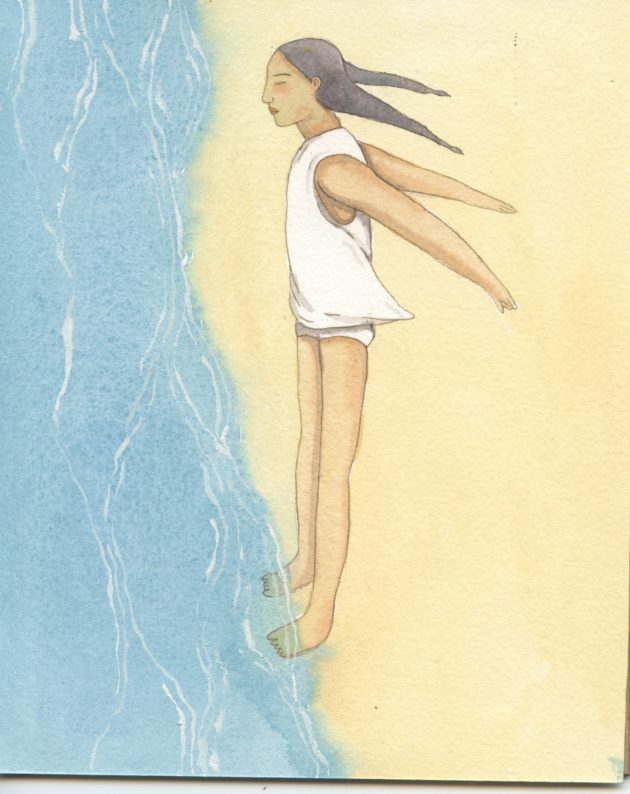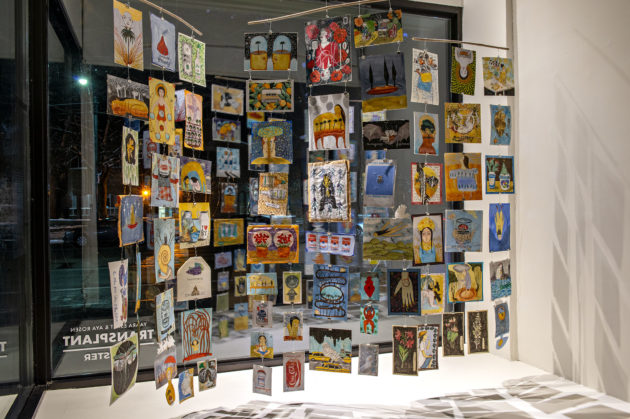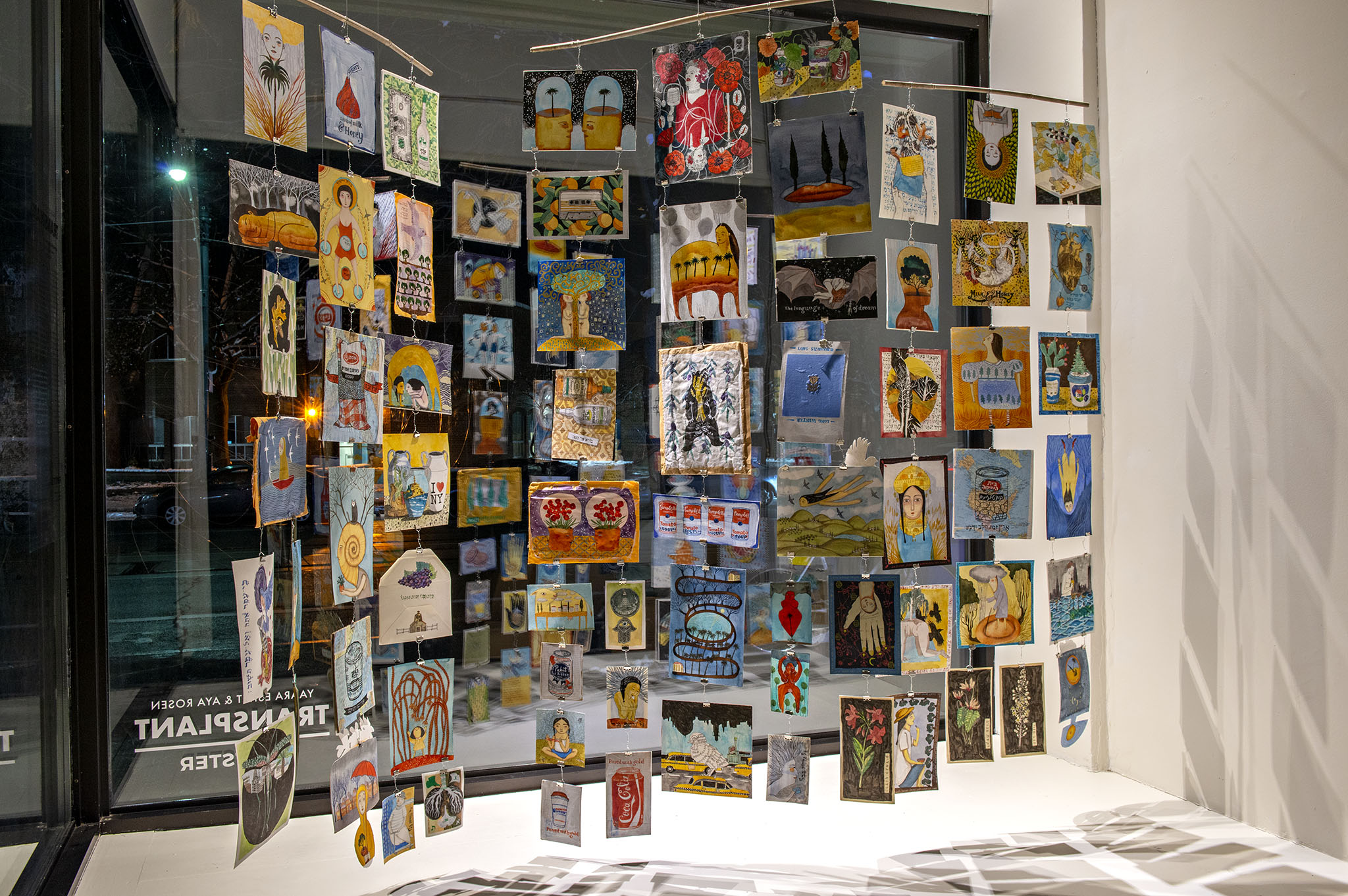
Transplant: Two Artists Connect Across Borders
Artists Aya Rosen (Brooklyn) and Yaara Eshet (Toronto) have never met in person but they know each other very well through their artwork. These two Israeli Jewish illustrators first connected in a Facebook group for Israeli expat artists and from there, undertook a collaborative experiment. Over the last three years, they have been sending one another sketchbooks through the mail and taking turns adorning the pages with lush, vibrant illustrations.
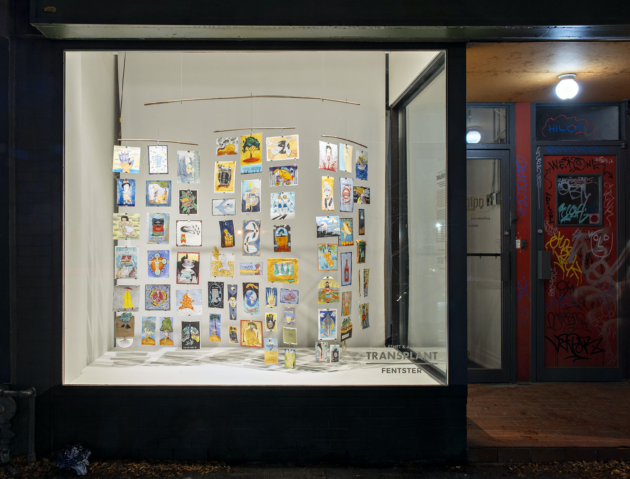
Nearly one hundred pieces by Aya Rosen and Yaara Eshet traveled by mail across the border to create the latest exhibition in the FENTSTER window gallery in Toronto. The installation features a hanging mobile with 70 double-sided suspended pictures. To create the installation, Rosen and Eshet would each make and send a small bundle of paintings in the mail. Once delivered, each would work on the reverse side, often in response to the original image. The exhibition, TRANSPLANT, explores what it is like to be transplants to North America (where they’ve both lived for over a decade) from a place with a different culture, climate and customs.
For Lilith, Eshet and Rosen extend their correspondence—this time sending each other questions to answer instead of works of art. In this first interview, Eshet answers Rosen’s questions.
Aya Rosen: When you are in Canada, what do you miss most in Israel? When you are in Israel, what do you miss most about Canada?
Yaara Eshet: In Canada, beyond the obvious (friends and family), I miss the heat. It’s not as if Canada has 12 months of snow a year, like some people may think, but that intense, burning heat, I miss that. And the desert – sometimes I miss the desert so much.
In Canada, I like the respect of personal space. There’s something very calming about Canadian politeness. Maybe it’s just that it suits my personality (introvert) better, but it gives me a sense of peace.
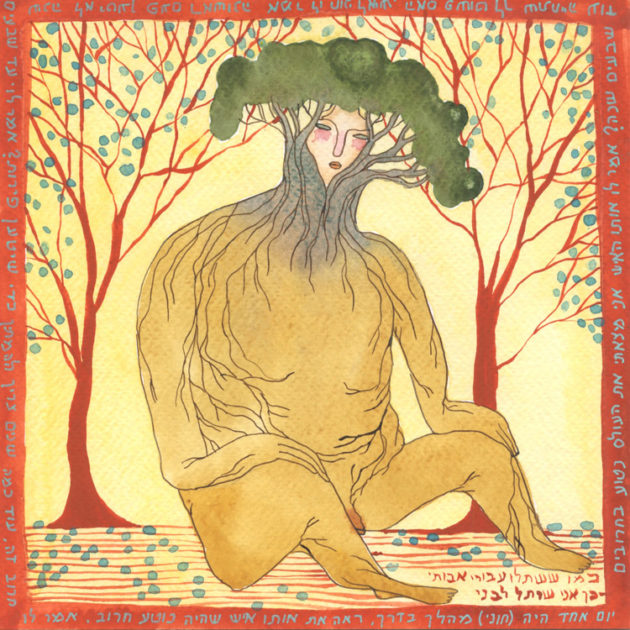
In most of my dreams, I feel like a stranger, I’m in the wrong place, the wrong time – no matter where the dream takes place.
AR: How do you feel that living away from Israel has changed the way you paint?
YE: I think the color palette changed, a lot more black and gray. The environments, whether more urban or natural, even if it’s not a specific place, are totally different. The houses look different and the way cities feel is different.
I love to paint the bare trees, the network of black lines they create against the sky. This image consistently appears in my works now. I learned how to draw snow, something that until I came to Canada I did not have to deal with!
I’m very inspired by Indigenous art from Turtle Island. I fell in love with it at first sight. The lines and the style really speak to me. It tells a story, and that narrative approach connects to my illustrative way of thinking.
AR: Do you dream in Hebrew or in English—and where do they take place?
YE: In most of my dreams I feel like a stranger, I’m in the wrong place, the wrong time – no matter where the dream takes place.
My favorite dreams are the ones where I’m flying. Sadly, they are very rare. There’s something very comforting about being disconnected from the ground, floating in the air and looking down as the world passes beneath me.
AR: Do you have any traditions that combine both Israeli and Canadian cultures?
YE: I thought I didn’t have an answer to this, but then I remembered: the English Haggadah! Our Passover table isn’t just for Hebrew speakers. Our Canadian friends are also invited, so we created a Haggadah that combines the Haggadah from my Kibbutz and a traditional one in English.
AR: What reminds you of Israel?
YE: There are certain smells that transport me right to Israel. In the summer, on hikes, I catch a whiff of wild flowers, or freshly cut grass, or clover and I feel like I’m back in the Jordan Valley (especially the fresh cut grass).
AR: What are your favorite books?
YE: I love science fiction and fantasy; it’s the ultimate escape. Books that transport me to the farthest places imaginable, that allows me the space to exercise my imagination and take a break from the reality of the here and now.
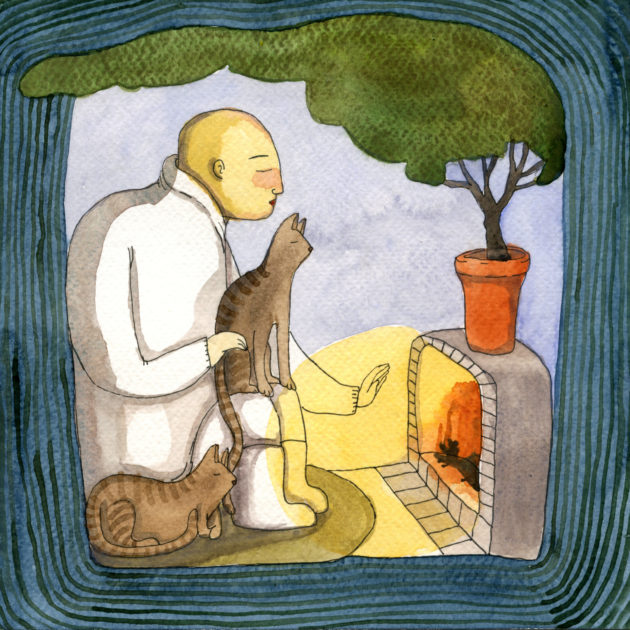
What I do know is that making art helps keep me sane — relatively, everything is relative.
AR: Do you listen to music when you paint? Is it Israeli or Canadian music?
YE:I must have music while I’m working, or it gets too quiet. The songs sometimes even give me ideas. I used to listen to Israeli radio, but the dichotomy of listening to traffic and weather reports (and bomb alerts) was too stressful and confusing. Now I listen to artists that I love (not necessarily Canadian) and Israeli music when I’m feeling nostalgic, or on Israeli/Jewish holidays.
AR: When and where do you feel at home?
YE: In my studio. Maybe it’s a cliché, but in that space with the desk and the paints and papers, that’s where I feel like I’m in the right place: like I belong, like I’m not a stranger. That is where I understand the language that is spoken, because it is my language and I can easily communicate. It’s where I feel safe, maybe the only place I don’t feel anxious; it is my shell.
AR: Do you have any creative aspirations that you haven’t got to yet? What is your dream project?
YE: I don’t know if I have a dream project. What I do know is that making art helps keep me sane — relatively, everything is relative. Sitting at my desk every morning and drawing something, anything, on small pages, without any commitments beyond that one drawing. One day, in the future, I would like to cover the walls of an entire room with these pieces from the last two years. I have hundreds, maybe thousands.
TRANSPLANT, an installation by Yaara Eshet and Aya Rosen is on view at FENTSTER @ Makom, 402 College Street, Toronto into April 3, 2022. Learn more about FENTSTER here.
Photographs of the gallery by Morris Lum.

